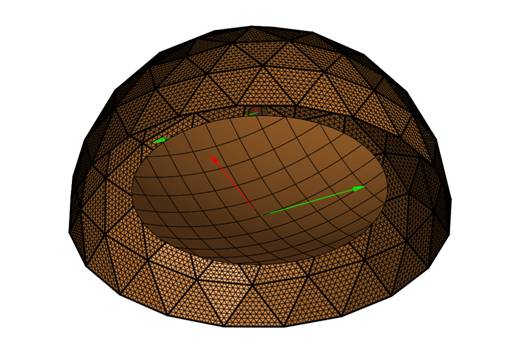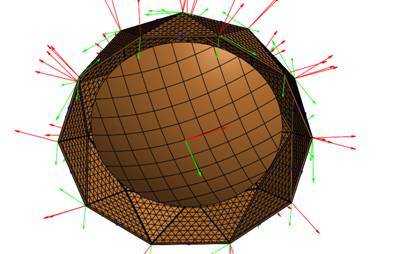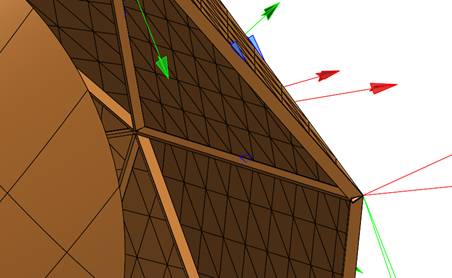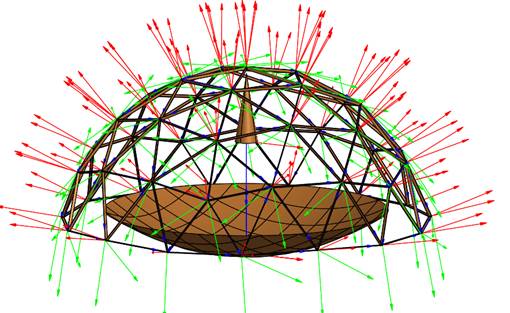Metal Space Frame Radome
A metal space frame radome has metal members forming a geodesic dome over the antenna with dielectric panels stretched in triangles.

Dome using circular metal members (struts) and dielectric panels

Radome from below showing the reflector located in the dome
When analyzed in GRASP (TICRA), the metal members are clustered together as a series of circular struts. The dielectric panels are entered one at a time and then gathered into a scatter_cluster so that all panels can be operated as a single entity in the command list. Both the series of circular struts and dielectric panels are referenced to a dome coordinate system which allows rotation of the dome over the antenna. This rotation allows determination of reflector beam changes as it is scanned while keeping the antenna boresight on the z-axis.
A second type of space frame radome uses rectangular strut members. These require that each strut have its own coordinate system in GRASP. This radome rotates the rectangular struts so that the narrow edge points radially to the center of the radome to reduce blockage. The actual struts are trapezoidal which means the inner edge can be larger than the outer edge and reduce GRASP run-time, because currents are not excited on the edges with grazing incidence.

Two triangular subdivision geodesic dome using rectangular members in GRASP

Dielectric panels added between rectangular cross-section struts

Dielectric panels added to outside of struts

Rectangular strut geodesic dome using 3 subdivisions